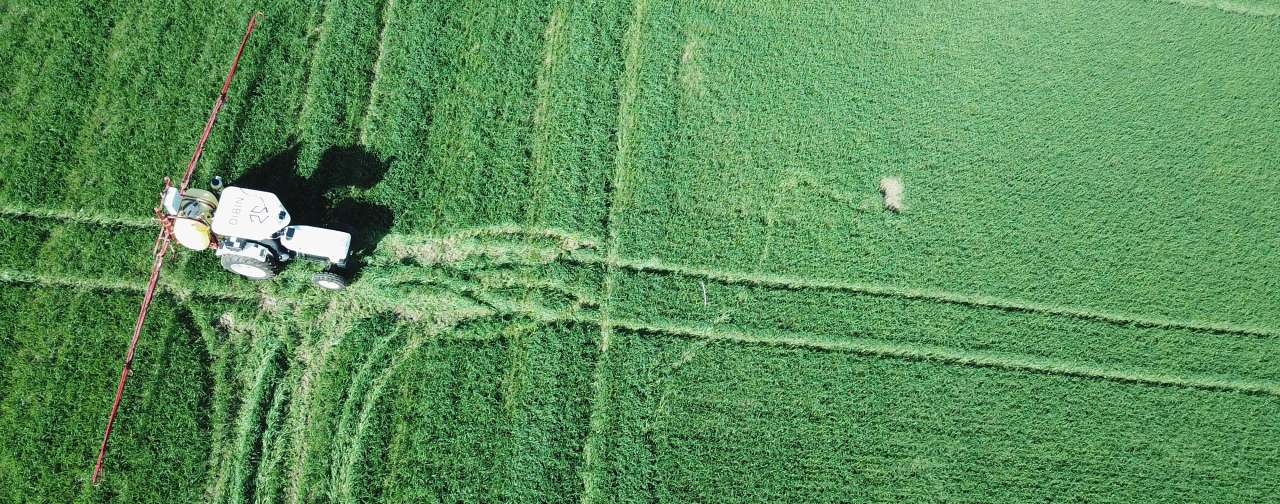Precision fertilising and battery tractor

Photo: Malin Larsen Græsdahl
In the SolarFarm project, researchers have looked at how we can make better use of nitrogen fertiliser and reduce diesel consumption in Norwegian farming. Solar energy can power electric and partly autonomous vehicles in precision agriculture with reduced greenhouse gas emissions.
Fertilising is currently performed in mostly the same way worldwide, regardless of the nutritional requirements of the individual plant. By using drones equipped with hyperspectral cameras, it is possible to collect detailed information about the plants’ seasonal nitrogen absorption. Based on this, you can create a partial fertilising recommendation that is translated to the tractor and fertiliser spreader.
The researchers of SolarFarm have tested the partial fertilising concept with variable distribution with high precision down to the square metre level. They have developed a fertiliser spreader for liquid mineral fertiliser and carried out a series of field tests on corn and barley. The aim is to provide each plant with precisely as much nitrogen as it needs, and for the technology to make it possible to distribute fertiliser more efficiently.
Starting with 16 different farms in different locations nationwide, the researchers have also seen how diesel consumption can be reduced.
Today’s modern tractors are too big and energy-intensive to replace a large diesel engine with an equivalent electric tractor using current technology. The researchers have therefore looked at the possibility of using several smaller electric tractors. The idea is to have a manned tractor and two self-driving ones that work in tandem.
In the project the researchers have shown that it is possible to change the energy source, and that it results in reduced greenhouse gas emissions. However, the practical application of this is a little way off. The major challenges are the lack of powerful, small autonomous electric tractors, and storage capacities for own produced energy.
Contacts

Jakob Geipel
Research Scientist
-
Division of Food Production and Society
(+47) 915 66 289 jakob.geipel@nibio.no Office Location: Apelsvoll
Purpose
Investigate how solar energy produced on the farm can operate electric and partly autonomous vehicles in precision agriculture with reduced greenhouse gas emissions.
Collaboration: Institute of Energy Technology (IFE), University of LeHavre, University of Stuttgart and Adigo AS
Funding: The Research Council of Norway
Contacts

Jakob Geipel
Research Scientist
-
Division of Food Production and Society
(+47) 915 66 289 jakob.geipel@nibio.no Office Location: Apelsvoll
